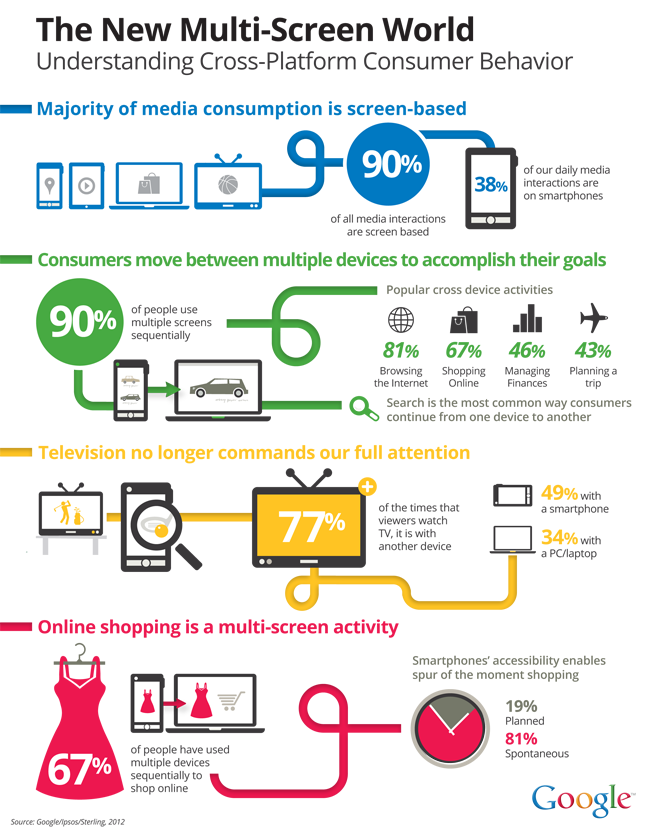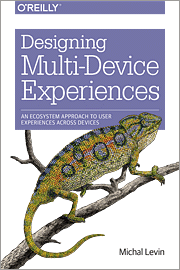It´s an Ecosystem
Gone are the days when we could choose what device to develop for. With the entry of the smartphone, the tablet and new flat screen TVs we no longer are single device users. We not only use many devices, we use them simultaneously to control or as a flow to complete each other. So we have four major devices, including the laptop, and the Internet of things means that every appliance you can think of, are or will be connected in a future not to distant.
Understanding User Behaviour
Now, more than ever, we need to get a better understanding of how users interact with devices in different contexts. The book contains numerous examples of multi device applications as well as some really nice summaries. Take a look at Google's own statistics shown in the graph below.
Consistent, Continuous and Complementary
One of the key takeaways is the 3C-framework where the author puts focus on:
- consistent: major functions on all devices, adjustments in layout to fit screen size. great example is google maps
- continous: start reading an e-book on your tablet, when you sit down in the car continue where you ended as an audiobook, leaving the car continue as audiobook on your smartphone and worry no more about work 🙂
- complementary: using your smartphone to control he TV, then the tablet to look up trivia about the actors on screen and nter reminder to watch next episode and use the smartphone to tweet about OMG-moments
Summary
This book is a great starter for UX consultants as well as the rest of us trying to find out how to build the next ground breaking application. The future is here now! It feels like an experience report from someone that has tried hard to design for todays technology as opposed to a detailed instruction on how to do your next project. Easy to read, very non-academic (which is a good thing in my opinion), gives an overview as well as some inspiration and points you where to look for more rather than trying to explain it all. Lots of good example applications but few hands-on techniques on how to do it yourself. A good complement to my book collection. Recommended!
Yes- I am lazy and stole the ilustrations from the Internet instead of drawing them myself. But I have so many other books to read...



